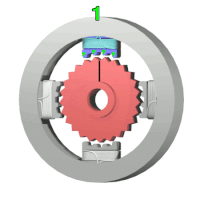
Photo from wikipedia
Abstract This work compares the effect of linear and two-step fast charging protocols on degradation of the Li-ion battery due to the solid electrolyte interphase (SEI) increase with the charging-discharging… Click to show full abstract
Abstract This work compares the effect of linear and two-step fast charging protocols on degradation of the Li-ion battery due to the solid electrolyte interphase (SEI) increase with the charging-discharging cycles based on an electrochemical and capacity fade coupled cell model. Since there is still a lack of knowledge regarding how the State of Charge (SOC) – dependent charging profile affects battery degradation, different slopes of the linear charging profile and different combinations of the charging current level for the two-step charging protocol are chosen as sample protocols representing the profiles varying with the SOC. The simulation results indicate that the two-step increasing charging protocol can achieve the lowest capacity fade ratio over 3000 cycles; the linear decreasing charging protocol can achieve the lowest charging voltage increase. The capacity fade due to the SEI layer increase in the negative electrode results in a shift of the stoichiometry coefficient cycling range and therefore a lower cell equilibrium potential and power performance.
Journal Title: Energy
Year Published: 2021
Link to full text (if available)
Share on Social Media: Sign Up to like & get
recommendations!